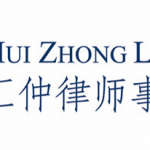Q&A with Nicholas Luckman, practice director of Wilberforce Chambers
1. The Bar and chambers themselves have evolved significantly over the past decade. How has Wilberforce adapted to client needs and market changes to adapt service delivery?
Meeting clients’ expectations and adding value should be central to the aims and objectives of any chambers. However, things are never made easy and today these aims need to be achieved while successfully navigating a fast-changing legal environment.
The growth of digital technology, the forces of consolidation imposed by purchasers of legal services reducing panels, the breaking down of barriers to entry, and increased client power have all served to create more competition in an already highly competitive legal environment.
What we have focused on at Wilberforce is developing a structure and culture that has the collaborative characteristics to support a business strategy focused on managing change and delivering improved client service.
We have concentrated on four core areas to achieve this.
- Specialist expertise. The aim is to offer clients added value through a concentration of leading specialist barristers in our core areas of practice. This has involved talent management of existing barristers, incremental growth through lateral recruitment of recognised experts, and growth of talented new barristers through our pupillage programme.
- Market focus. We have invested more time in tailoring our client offering to market conditions and in doing this we have increased the dialogue with our clients to better understand what our clients need from us. We approached this by developing and reviewing our strategy to incorporate a more in-depth client research project, which is now repeated year on year. The data obtained enables us to gain a deeper insight into market conditions and client needs, and therefore helps us to make better business decisions on the services clients need, as well as differentiating ourselves from the competition and focusing on client retention.
- Investment in staff. The client service experience is heavily dependent on the support our clients get from the practice management and administration teams at Wilberforce. We have training programmes that reinforce and hone the skills they need in the marketplace. As the business risk that barristers have to manage increases and the pressures that law firms face from their clients intensifies we hope and feel that the collaborative business approach from our team adds value to our service.
- Technology. Our investment in technology is a key focus of our strategy aimed at improving efficiency and communication with our clients.
2. What do you see as the main points that differentiate Wilberforce from competitors?
At Wilberforce we have pursued a strategy of focused differentiation. As with all markets, the more congested they are the more specialist they become, and this is no different for law and our core practice areas of commercial litigation, fraud and asset recovery, company and insolvency, arbitration, trusts, pensions, professional negligence and property. The focus differential for us is the complementary specialist capability our barristers have to support the crossover that naturally occurs between these areas, and when you add in our leading offshore and international experience, what we are able to offer clients is genuine specialist expertise that supports the complex disputes we see today in the market. We believe this sets us apart from many of our competitors.
Our culture and brand differentiates us. From specialist expertise to the culture, values and diversity of a chambers, increasingly these are areas that our clients assess before making decisions. What we look like and how we behave as a chambers is one of the big changes I have seen at the Bar, largely reflected by the increase in professional branding by sets. The challenge here is for barristers to think and act more collaboratively without losing their individualistic skills, which comes down to having the right culture. At Wilberforce, we are constantly trying to shape our culture by improving internal communication and using the right vocabulary to influence behaviour; as well as practice development meetings and weekly runs (a clerk-barrister weekly catch-up), we circulate chambers news via email every Friday and maintain an intranet. We believe that our approach to bringing together members and staff is unrivalled at the Bar, which supports and further shapes our culture and brand.
3. What do you see as the main elements of a successful chambers in the 21st century?
A chambers brand is increasingly valued by clients and what has become apparent is the importance of strength of brand and brand recognition. Conveying our culture and expertise through our brand is only achievable, however, by maintaining visibility in the market – both online and in person. In the congested market you need to be noticed and business development skills are essential for 21st century barristers and practice management staff.
Understanding the opportunities that are being created by the current changes in the legal market and having a strategy to capitalise on this is very important for chambers. This includes both domestic and international opportunities and understanding where the demand is that supports a chambers expertise and how a chambers is able to sell its specialist services into these markets. If done successfully this will help provide growth.
Chambers that have a well-thought-through vision and a strategy to deliver that vision, supported by the right professional leadership will stand out, and in my view will become increasingly successful. Furthermore, a strong recruitment policy and an identity that supports diversity are key.
4. What would you identify as the macro-level trends in the UK dispute resolution market in 2018? Which practice areas do you envisage will see the most growth or change?
Corporate insolvencies. A rise in corporate insolvencies will continue over the next year. Inflation is having an impact on margins and the tension between rising input costs and the inability to pass this on to a reluctant customer base is causing distress. An increase in the National Living Wage and changes in business rates have added additional levels of financial pressure to businesses in the UK. For international businesses the weaker pound, the trade war between the US and China, oil prices and the global economic outlook all throw up threats. Brands such as Carillion, Toys R Us and Jamie’s Italian have already succumbed to pressures and the predicted increase in interest rates is only likely to tip the balance between survival and failure.
Domestic arbitration. An increase could be driven by two factors: firstly, the status of the English courts in a post-Brexit Europe where enforceability of judgments is less certain as a result of key EU legislation ceasing to apply. The UK will remain a party to the New York Convention, which will leave arbitration immune from post-Brexit uncertainties over enforceability of awards in Europe. Secondly, court fees have been increased to £10,000 for claims valued over £200,000; with the MoJ trying to balance its budget, there is a risk that these costs could increase further, which would put pressure on litigation and may turn clients’ attention to arbitration as an option.
International arbitration. My feeling is that key global risks, such as the potential for an equity market crisis, a China-US trade war affecting global market trading and increasing problems for suppliers, and another oil price fall, will increase disputes in an already buoyant arbitration market.
Cryptocurrency disputes. I mention the area of cryptocurrencies, although my instinct is that the disputes in this area arising from contracts that are taking place today may take a little longer to filter through to litigation or arbitration.
Areas of specialism. More demand for niche expertise in emerging areas such as art and cultural property, digital trading and cyber fraud.
5. Where do you see the Bar in ten years’ time?
The future of the Bar will depend on whether it can justify its position in the legal market. One thing we can be certain of is the market will not look the same as technology drives efficiencies and disrupts.
As the market opens up the demand for high-quality, low-cost, flexible legal resources will become greater. The government will be preoccupied with Brexit, so is unlikely to focus on the structure of the legal professions, which leaves market forces.
Therefore structure, flexible working, cost leadership and attracting talent are key to how the Bar will look. Chambers will need to keep their structures lean and efficient to maintain cost leadership, but most importantly the profession will need to remain attractive to the best talent and I believe diversity will play a big part in this. The Bar must attract talent from a wider social pool and create better career paths for minority groups. This will require improving recruitment methods and giving better support in practice to nurture this talent, with the aim of identifying and attracting high-performing individuals from non-traditional backgrounds and ensuring equal opportunities for all. Retention of women at the Bar is one example of an area of diversity that needs to improve.
We will see the mid-sized chambers disappear and be replaced by large and more niche sets. This consolidation of chambers and movement of barristers will be driven by improved efficiencies, increased levels of specialism and organisational change. Furthermore, the new entrants we are seeing now will have changed the traditional referral channels of work to the Bar. We have already seen the ‘Big Four’ accountancy firms develop their legal capability internationally and they along with other market participants will present the opportunities and threats that the Bar of the future will need to address to survive.
Nicholas Luckman, practice director, Wilberforce Chambers
8 New Square
Lincoln’s Inn
London
WC2A 3QP
Tel: +44 (0)20 7306 0102
Email: chambers@wilberforce.co.uk
Web: www.wilberforce.co.uk














